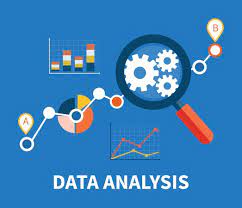Crafting a Measurement plan seems akin to preparing a gourmet dish; every ingredient must complement the others, yet stand strikingly distinct. For businesses and researchers alike, a well-prepared measurement plan is crucial in making informed decisions and steering projects to success.

Imagine stepping into a labyrinth; your measurement plan is the map you carry – your assurance you won’t wander aimlessly. It’s not just a collection of figures and charts. It’s an arranged approach to capturing necessary data points to paint a clear picture of performance or study outcomes.
Firstly, let’s elaborate on the essence of setting objectives. Picture this: objectives are the stars guiding your ship across the data ocean. They should be crisp and sharp. Instead of meandering through voluminous and often irrelevant data, objectives pinpoint exactly what you need to know. Are you aiming to enhance customer satisfaction or streamline your production? Your goal determines the data you collect — as straightforward as choosing between sailing east or west.
Next, consider precision in choosing metrics. Visualize a fruit market where every stall brims with variety. Metrics are like selecting the perfect apple: quality over quantity. It’s tempting to track everything from employee satisfaction to real-time production stats. However, picking too much from this data smorgasbord can bog down the analysis. Focus on metrics directly connected to your objectives. If customer loyalty is your star, don’t get sidetracked by the nebula of unrelated performance indicators.
Diverge into tools and methods. Here, technology steps in — like a smart kitchen gadget that does everything from slicing to blending. Various software platforms can automate data collection and crunching numbers, ensuring accuracy while saving time. But remember, the fanciest gadget won’t help if you don’t know what you’re making. Choose tools that align closely with your specific needs rather than going for the most sophisticated or popular ones.
Segue to the pivotal role of interpreting data. Think of this like reading a thriller where every detail might contain clues. The knack lies not just in gathering data but in decoding it. Interpretation transforms cold statistics into actionable insights. It’s not about how much data you have, but how well you understand it. Like a detective piecing together evidence, weaving through the narrative of numbers can reveal paths to efficiency, innovation, and more.
Communication cannot be overstated. It’s similar to telling a compelling story around a campfire. Once you have your insights, sharing them effectively matters immensely. Tailor your communication to your audience. What mesmerizes a boardroom might not necessarily captivate a team of engineers or a group of marketers. Choose your words with care, creating visuals that resonate and convey the essential narrative lurking within your data.
Regular updates are akin to seasoning food as it cooks. Keep assessing and tweaking your measurement plan. Like climates change, so does the business environment. A stagnant plan can lead to misleading data interpretation, as out-of-date as last season’s fashion. Schedule regular reviews to adapt and align your plan with dynamic business or research landscapes.
Every interaction with data should help shape your decision-making process, much like how each careful turn helps a driver in a high-speed car race. Whether it’s deciding on a new market strategy or refining an existing product, your measurement plan is your copilot, whispering the wisdom of data in your ear, crucial at every sharp turn and every steep climb.
Remember, the strength of a measurement plan lies in its clarity, adaptability, and alignment with strategic goals. It’s not merely a procedural formality but a strategic tool, sharp and ready in your arsenal, lighting your path like lanterns in the dark. Take control, set clear targets, and let your measurement plan guide you through the maze of data to insights that illuminate the way forward.